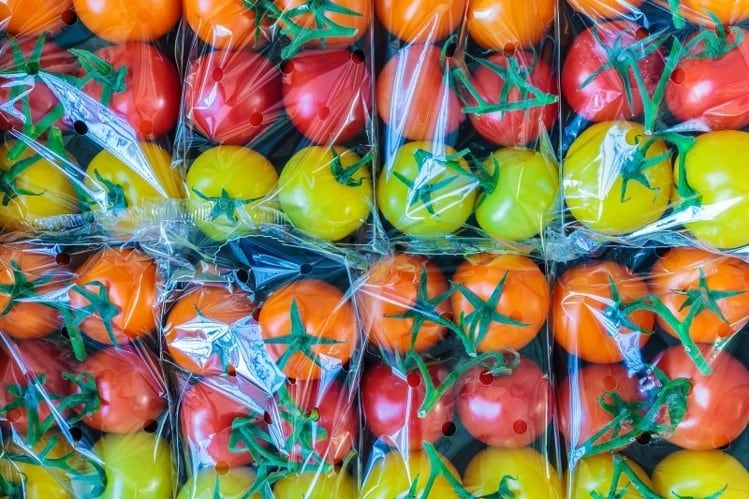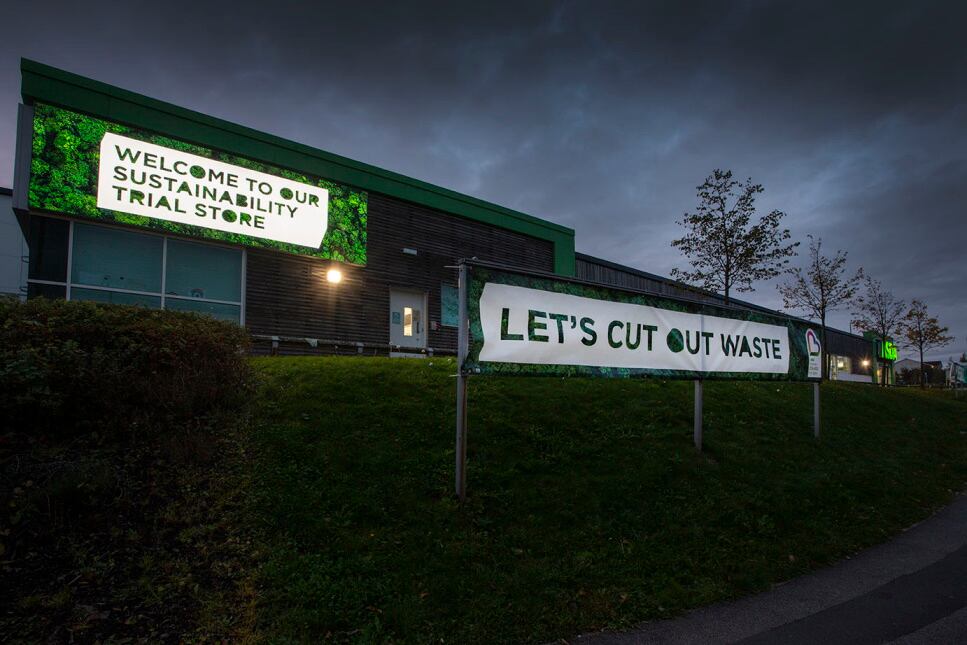Single-use plastic has seen a groundswell in opposition as consumers wake up to concerns over ocean pollution and the use of fossil fuels.
According to research from Leatherhead, this is fuelling real change in consumer behaviour. In the UK, for instance, 70% of consumers are actively looking for products that contain less plastic in their everyday shopping.
However, plastic also serves important functional purposes. Packaging plays a role in both food safety and spoilage – and for this reason it is important that a holistic view of the problem is taken, Dow Packaging sustainability expert Jeff Wooster suggests.
When looking for solutions to the plastic problem, pollution and carbon issues ‘absolutely need to be addressed’ as well as food safety and waste. “These issues are interconnected; they aren’t independent of each other. They are all significant drivers of a host of environmental and climate issues,” he told us.
A third of all food produced is wasted. This has a large impact on climate change. Food production is responsible for 26% of global greenhouse gas emissions, food waste is responsible for 6-7% of total emissions. If food waste was a country, it would be the world’s third largest emitter behind only the US and China.
“Food waste further accounts for the squandering of 21% of all fresh water, 18% of cropland and 19% of fertilizer. Reducing the amount of food discarded will reduce the amount of greenhouse gases being released into the atmosphere and will provide a number of other meaningful environmental benefits,” Wooster added.
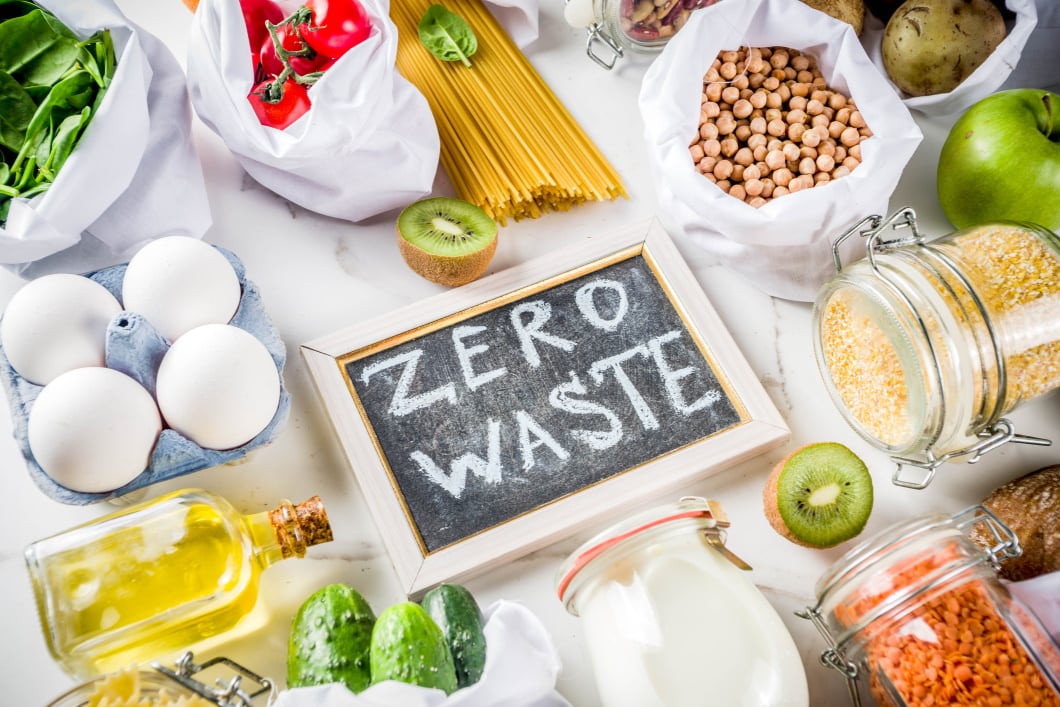
In Europe, most food is wasted in the home. And this means it is an area where we can all make positive change, Wooster suggested.
“Food waste, in particular, is one area where people can truly make an impact through easy, actionable steps like rethinking how they shop, cook and repurpose food…We can all make an impact through simple day-to-day changes.”
Food waste focus: Increasing value while cutting footprint
But while consumers need to take individual responsibility for the food wasted in their own fridges, the food industry also has an important part to play. Here, ‘sustainable’ packaging can make a significant contribution.
Wooster noted: “Companies can also drive real change in this area by recommitting to and investing in sustainable packaging across each step along the supply chain.”
For the sustainability expert, creating a more sustainable food sector is about ‘finding ways to increase benefits, performance and value’ while ‘decreasing burdens, resource consumption and the carbon footprint’.
“It’s about using resources wisely to make sure we have enough. Food waste plays a big part in this. It will be impossible to see significant improvements to our current food waste problem if companies don’t prioritize optimizing value by providing improved product protection that helps avoid waste in the first place.”
‘Pivoting’ packaging to preservation
Companies are leveraging packaging innovation to help address food waste, Wooster observed, ‘pivoting’ to invest in innovations ‘that will better preserve perishable foods’.
“For example, portion packaging allows food service operators and consumers to open only the portion of the food that will be used immediately. And this is being combined with improved design for environment and design for recyclability. In the area of design, Kraft Heinz stands out for its focus on ‘designing for recyclability’. The company is producing and utilizing the most effective materials to pack and protect their products and reduce food waste. This reduces Kraft’s operational packaging impacts and supports the move toward a more circular economy,” the Dow sustainability expert revealed.
“We’ve seen many new companies arise with missions to reduce food waste through rescuing food that might have otherwise been tossed, deemed unworthy to consume, or judged too unattractive to sell in supermarkets. Loop and Imperfect Foods are two examples of companies focusing on upcycling ingredients. These programs and the many others being implemented around the world can have a huge impact on our efforts to reduce food waste globally.”
Increased recycling will require ‘shift in mindsets and practices’
While Leatherhead’s consumer research into attitudes to plastic found 46% of people feel guilty about the amount of plastic they use, it also found a similar number of people – 41% - throw plastic bottles in the bin after just one use.
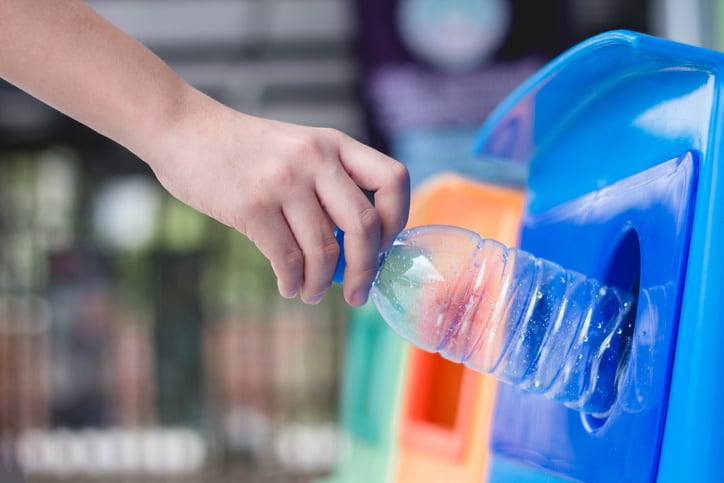
So, what is preventing us from increasing recycling rates for food grade plastics?
At a high level, Wooster said that the current economic model needs to be reassessed. “The biggest challenges to implementing more circular solutions is that it will require altering an economic model that has been largely successful up until now. However, as the population increases and incomes rise, and with that a further drain on resources, it will necessitate a greater effort to educate and shift mindsets and practices. This means a willingness to embrace the added short-term costs and investments needed to implement more circular solutions, which is no easy undertaking. But it is necessary and will create long term value.”
Drilling down to specifically look at food grade plastics, Wooster continued, there are numerous practical obstacles that need to be overcome, from ‘standard efforts’ around collecting and sorting to ‘the different handling characteristics of the large number of different types of rigid and flexible packaging used to meet regulatory requirements’ and ‘reassuring the general public about the safety of packaging made from recycled products’.
“Among the largest barriers are the cost requirements in terms of new testing requirements, equipment, time, personnel and investment to implement the processes and innovations needed. These come amid growing pressures from consumers for companies to reduce the environmental burdens associated with their products while maintaining the quality, safety, and regulatory compliance standards that are essential to protecting our food supply.”
Innovation and collaboration to boost circular models
The answer to these challenges – barriers to recycling and the need to protect products - will be found in cross-industry collaboration, Wooster suggested.
“For example, at Dow we’re also focusing on building designs that enable fully recyclable packaging by partnering with the likes of Kashi to deliver advanced packaging innovations. Dow and Kashi together designed the first resealable stand-up pouches for Kashi’s Bear Naked brand granola to be fully recyclable. Bear Naked used Dow’s RecycleReady technology, meeting the recycling standards of the Sustainable Packaging Coalition’s How2Recycle label and making it compatible for existing polyethylene recycling streams. Consumers can now drop off their recyclable packaging at their local grocery store or other retailer.”
Innovation is also taking place in the materials space, with the development of ‘better performing’ plastics and alternative materials. Dow has enhanced its polymer solutions for meat and cheese packaging. “This alternative solution is helping to make packaging production more efficient, improve the consumer experience, preserve the food items for longer and reduce waste,” Wooster observed.
The packaging arm of the chemicals giant has also developed a polyolefin plastomer product line, Affinity, which helps extend shelf life of fresh lettuce. “This requires a controlled atmosphere to allow the proper exchange of oxygen and carbon dioxide between the package and the environment in order to maintain freshness. And, the plastic technology provides advanced sealant performance for items like meats, cheeses, fresh-cut produce, dry foods, and even flowable material pouches.”
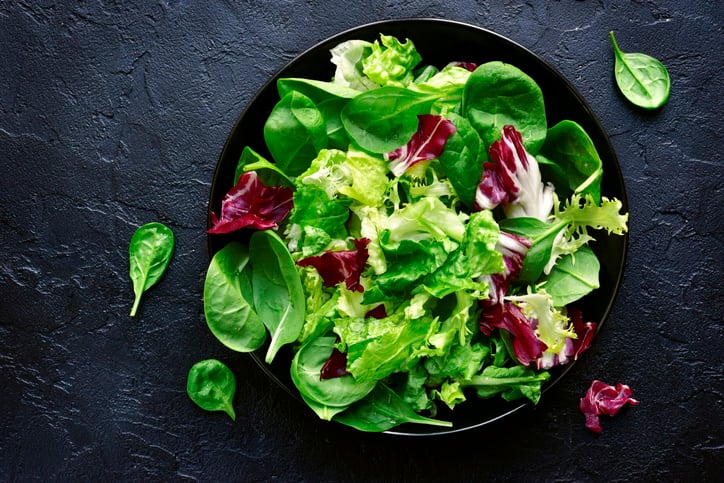
Dow Packaging maintains that plastic can be part of a sustainable future for the food industry – and that reduction, in isolation, is not the answer.
“A reduction strategy and the development of circular models must be used concurrently in order to achieve our goals for resource conservation. Companies and organizations should invest in the reduction of plastic waste by using only as much material as truly needed and investing in solutions that use recycled plastic or enable the reuse of virgin plastic,” Wooster argued.
“Advanced plastic packaging not only reduces food waste, but also reduces the risk of contamination with unpackaged foods. Once food reaches supermarkets, an extended shelf life is essential in a reduction strategy and materials like high-barrier plastic packaging can help prolong shelf life, keeping foods fresher and safer longer.
“A sustainable future is only attainable if we work to enable new science- and technology-based solutions that reduce waste while incorporating the key measures for a circular economy. By combining the two strategies our goal of minimizing food waste can be achieved.”

